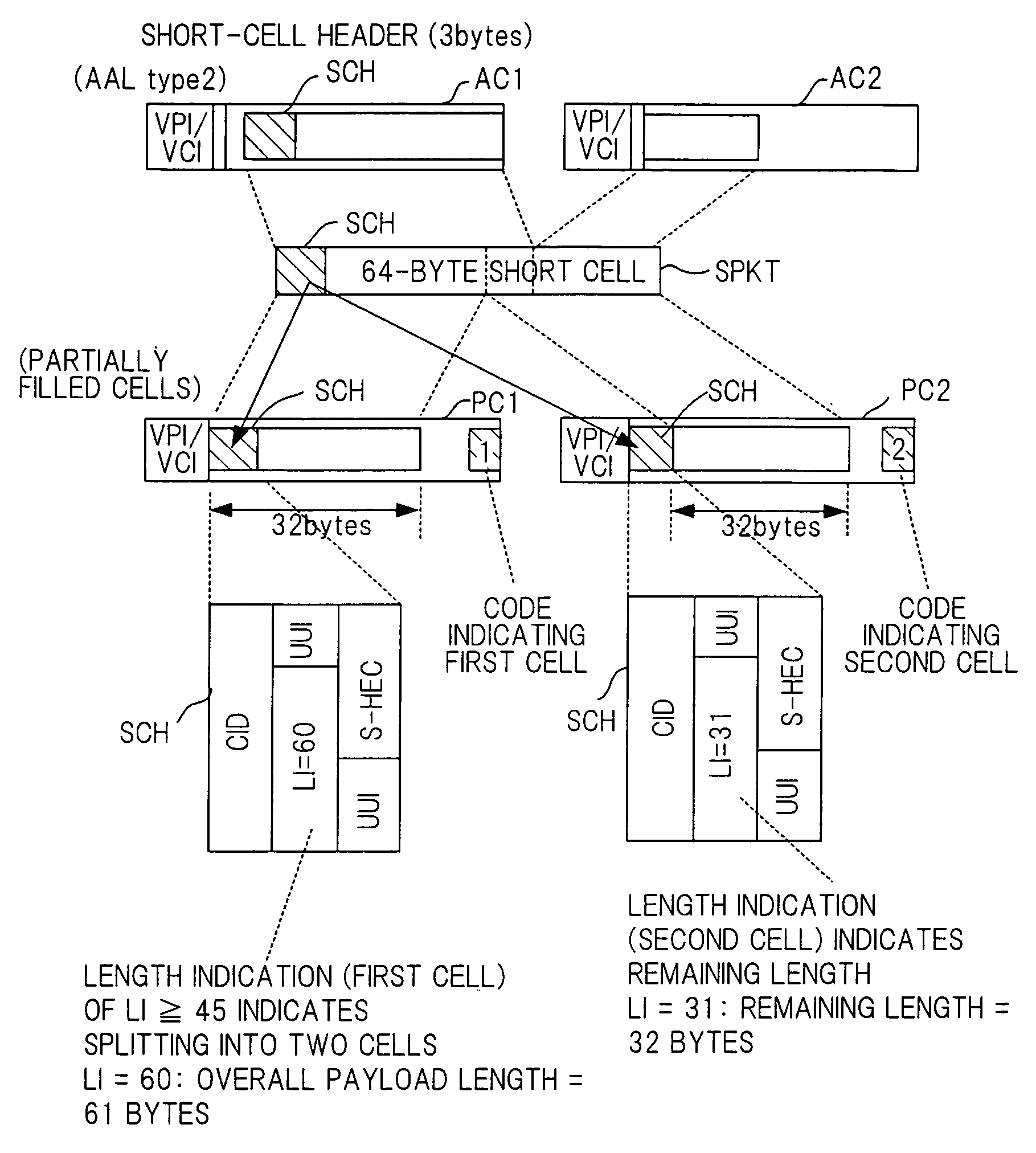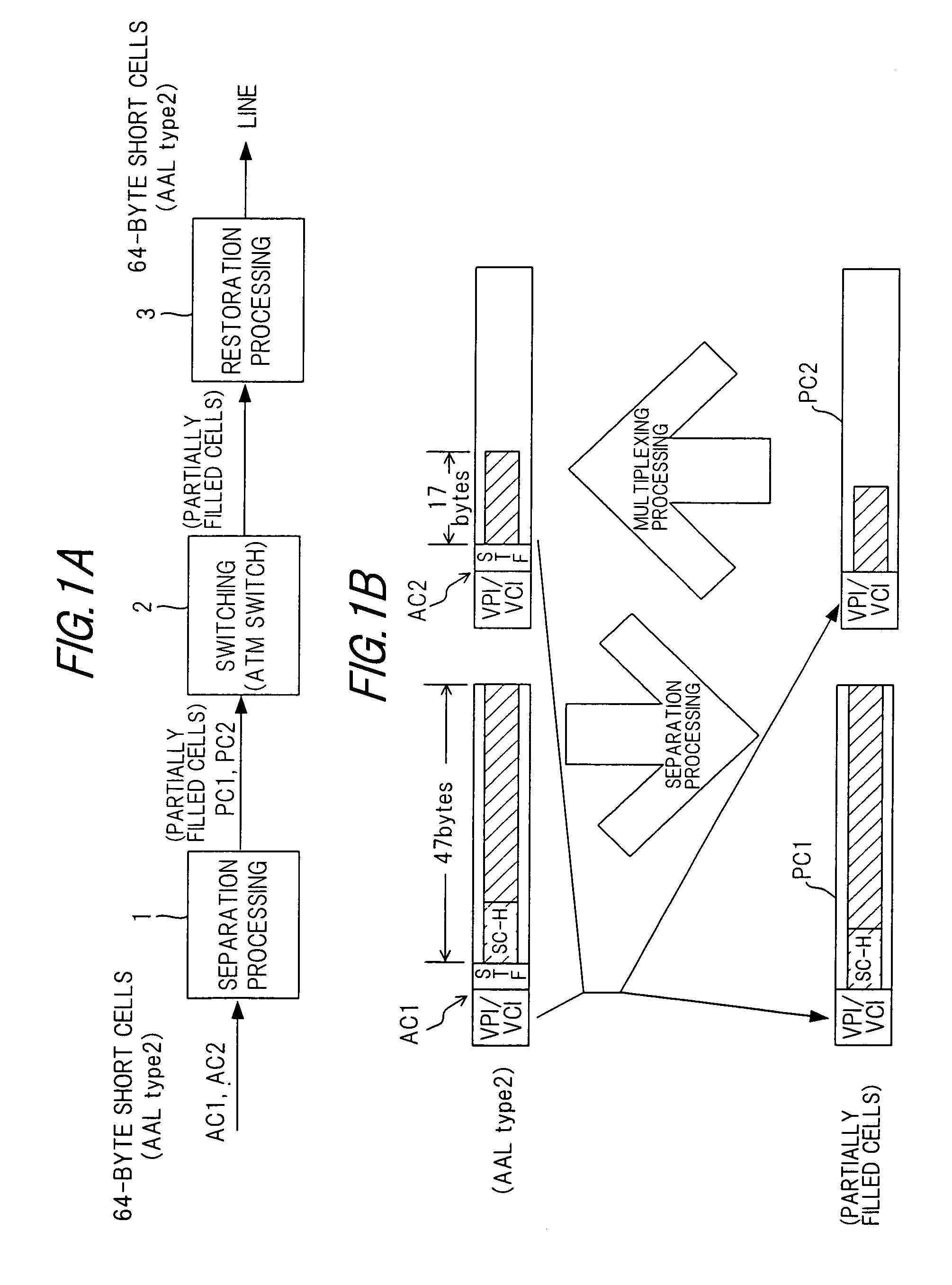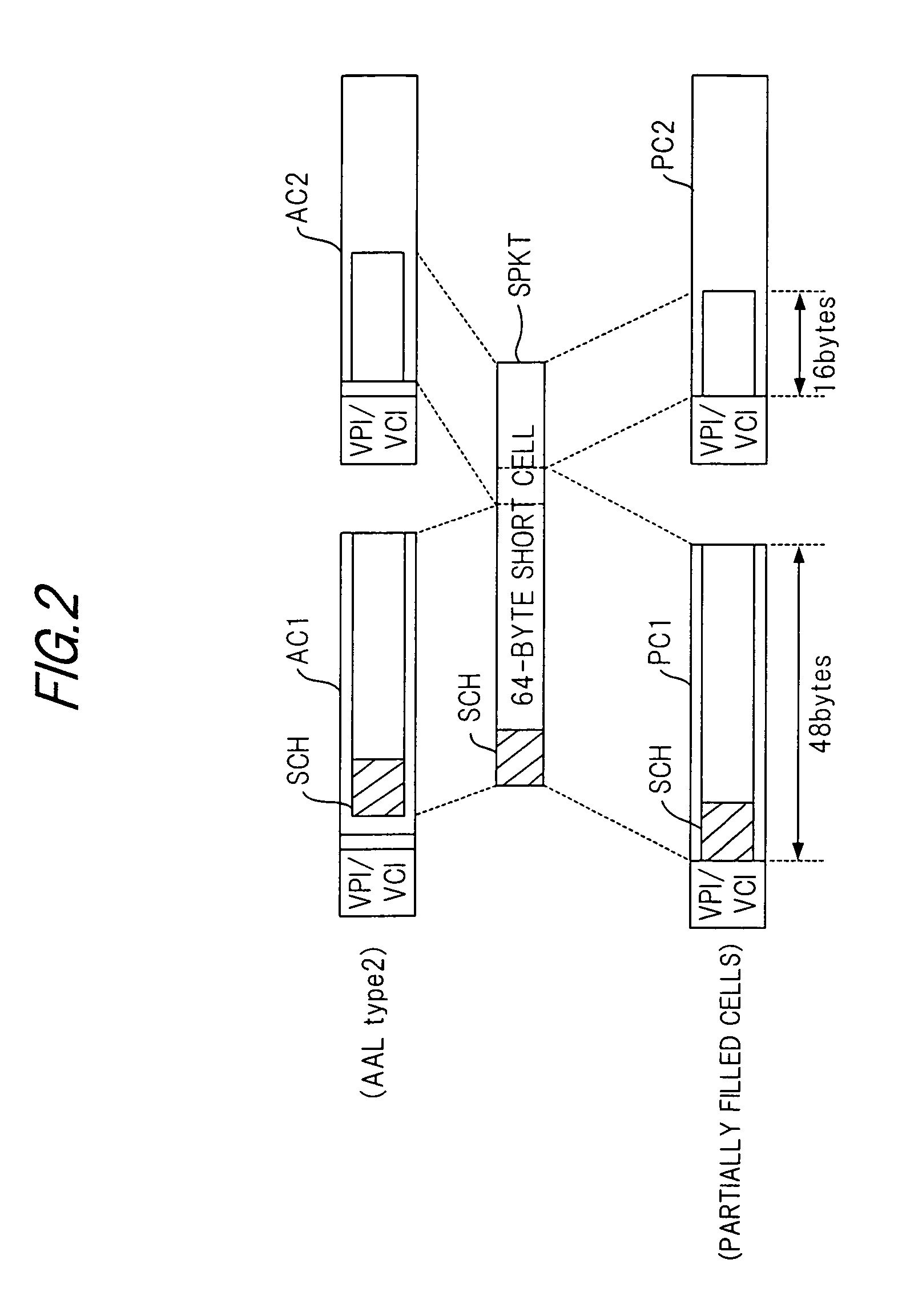Cell processing apparatus, ATM exchange and cell discarding method
a cell processing and cell technology, applied in the field of cell processing apparatus and atm exchange, can solve the problems of delay in data, decline in communication quality, and time-consuming to fill the payload of one atm cell with data, and achieve the effect of maintaining the quality of data transmission
- Summary
- Abstract
- Description
- Claims
- Application Information
AI Technical Summary
Benefits of technology
Problems solved by technology
Method used
Image
Examples
fourth embodiment
(d) Fourth Embodiment of Partially Filled Cell Forming Unit and AAL2 Cell Forming Unit
[0175]FIG. 25 is a block diagram showing a fourth embodiment of the construction of a partially filled cell forming unit for implementing the processing for forming partially filled cells described above in conjunction with FIG. 5. Components identical with those of the third embodiment shown in FIG. 22 are designated by like reference characters. The fourth embodiment differs from the third embodiment in that an SN (sequence number) assigning unit 50 is provided. The latter creates sequence numbers SN (=0, 1) and applies them to the 52nd bytes of respective ones of the first and second partially filled cells PC1, PC2.
[0176]The partially filled cell forming unit according to the fourth embodiment selects a predetermined input signal in accordance with the count in counter 57, as shown in FIG. 26A, if the length of a short packet is 48 bytes or less, thereby creating and outputting a partially fille...
fifth embodiment
(e) Fifth Embodiment of Partially Filled Cell Forming Unit and AAL2 Cell Forming Unit
[0180]FIG. 28 is a block diagram showing a fifth embodiment of the construction of a partially filled cell forming unit for implementing the processing for forming partially filled cells described above in conjunction with FIG. 6. Components identical with those of the fourth embodiment shown in FIG. 25 are designated by like reference characters. The fifth embodiment differs from the fourth embodiment in that:[0181]the short-cell header SCH in inserted into both the first and second partially filled cells PC1, PC2;[0182]a 1-byte buffer 41 is provided for storing one byte of data consisting of the 1-bit sequence number SN created by the SN assigning unit 50 and the high-order seven bits of the third byte of the short-cell header SCH; and[0183]the content (the sequence number SN) of buffer 41 is inserted into the S-HEC portion of the short-cell header SCH of each of the first and second partially fil...
sixth embodiment
(f) Sixth Embodiment of Partially Filled Cell Forming Unit and AAL2 Cell Forming Unit
[0186]FIG. 31 is a block diagram showing a sixth embodiment of the construction of a partially filled cell forming unit for implementing the processing for forming partially filled cells described above in conjunction with FIG. 7. Components identical with those of the fourth embodiment shown in FIG. 25 are designated by like reference characters. The sixth embodiment differs from the fifth embodiment in that:[0187]the 1-byte buffer 41 is provided for storing one byte of data consisting of the 1-bit sequence number SN created by the SN assigning unit 50 and the low-order seven bits of the first byte (the VPI portion) of the ATM header; and[0188]the content (the sequence number SN) of buffer 41 is inserted into the most significant bit of the first byte of the ATM cell header of each of the first and second partially filled cells PC1, PC2.
[0189]The partially filled cell forming unit according to the ...
PUM
 Login to View More
Login to View More Abstract
Description
Claims
Application Information
 Login to View More
Login to View More - R&D
- Intellectual Property
- Life Sciences
- Materials
- Tech Scout
- Unparalleled Data Quality
- Higher Quality Content
- 60% Fewer Hallucinations
Browse by: Latest US Patents, China's latest patents, Technical Efficacy Thesaurus, Application Domain, Technology Topic, Popular Technical Reports.
© 2025 PatSnap. All rights reserved.Legal|Privacy policy|Modern Slavery Act Transparency Statement|Sitemap|About US| Contact US: help@patsnap.com



